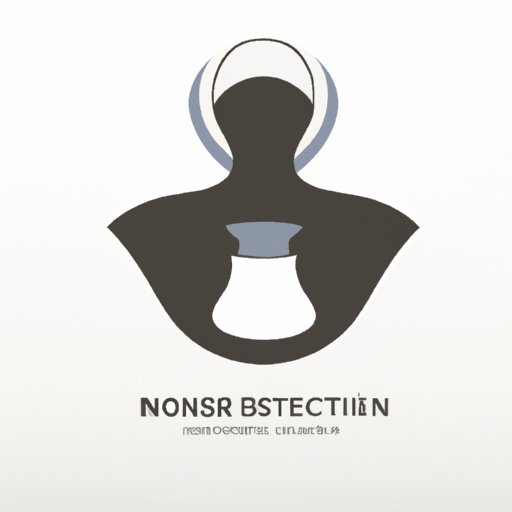
Introduction
Breast reduction surgery, also known as reduction mammoplasty, is a surgical procedure that removes excess breast tissue and skin, making the breasts smaller, lighter, and firmer. If you have undergone this surgical procedure, you may be wondering whether you can still breastfeed your child. Breastfeeding is a vital process that provides a wide range of benefits to both mother and child.
According to experts, most women who have had breast reduction surgery can go on to breastfeed their baby, but the success of breastfeeding can vary depending on several factors. This article aims to help women navigate breastfeeding after breast reduction surgery and shed light on the challenges and successes that come with it.
Breastfeeding After Breast Reduction: What You Need to Know
Before diving into the challenges and successes of breastfeeding after breast reduction surgery it is important to understand what is involved in breastfeeding after the procedure.
Overview of Breastfeeding After Breast Reduction Surgery
If you’re considering breastfeeding after breast reduction surgery, it is important to realize that the surgery may interfere with your ability to produce milk. The amount of milk that you produce can be reduced due to the removal of glandular tissue, as well as the effects of the anesthetic and other medications during the surgery.
Benefits of Breastfeeding
Despite the potential challenges, breastfeeding provides a wide range of benefits to both mother and child. Breast milk is packed with essential nutrients that help your baby grow and develop. It also strengthens your baby’s immune system, protecting them from infections and diseases. Additionally, breastfeeding can promote bonding between mother and child and can reduce the mother’s risk of developing certain health conditions such as breast and ovarian cancer.
The Challenges of Breastfeeding and Breast Reduction Surgery
The primary challenge of breastfeeding after breast reduction surgery is that the surgery may interfere with your ability to produce milk. Reduced milk production means that your baby may not receive all the nutrients they need, or that you may have difficulties establishing a good nursing relationship. Other common challenges include nipple sensitivity, engorgement, and painful letdown.
What Women Need to Know About Breastfeeding After Breast Reduction Surgery
If you are considering breastfeeding after breast reduction surgery, it is important to discuss your options with your healthcare provider. Your doctor can help you understand the potential challenges and help you create a plan that will help you overcome those challenges. Some women may need to supplement their breast milk with formula, while others may need to use a breast pump to help stimulate milk production.
Common Misconceptions About Breastfeeding After Breast Reduction Surgery
There are many misconceptions surrounding breastfeeding after breast reduction surgery. The most common one is that women who have had breast reduction surgery cannot breastfeed. However, this is not true. While breastfeeding can be more challenging after breast reduction surgery, it is often possible with the right support and care.

The Breastfeeding Journey After Breast Reduction Surgery
Understanding the breastfeeding journey is crucial to the success of breastfeeding after breast reduction surgery.
Understanding the Breastfeeding Journey
Breastfeeding is a journey that starts during pregnancy and continues until your baby is weaned. During this period, both mother and baby learn a lot. Babies learn how to suck and swallow, and mothers learn how to read their baby’s cues and how to position and latch them on properly. Understanding this journey is crucial to overcoming any challenges that may arise.
The Different Stages of the Breastfeeding Journey
The breastfeeding journey can be divided into three different stages: the early period, the adjustment period, and the mature period. Understanding the different stages is important for knowing what to expect, and how to overcome any challenges that may arise. The early period is usually marked by increased milk production, while the adjustment period can be a challenging time as mothers and babies learn to work together. Finally, the mature period is a time of established milk production and a more comfortable nursing experience.
The Role of Support in the Breastfeeding Journey After Breast Reduction Surgery
Support is a critical component of the breastfeeding journey for all mothers, but particularly for those who have had breast reduction surgery. Support can come in many forms, including from family, friends, peers, support groups, and healthcare providers. The key is finding the support that works best for you.
How Breast Reduction Surgery Affects Breastfeeding
Understanding how breast reduction surgery affects breastfeeding is crucial to navigating the potential challenges.
Understanding Breast Reduction Surgery
Breast reduction surgery involves the removal of glandular tissue, fat, and excess skin. The aim of the surgery is to reduce the size of the breasts and create a more aesthetically pleasing shape. There are different types of reduction mammoplasty, including the traditional method, vertical mammoplasty, and liposuction-assisted mammoplasty.
The Impact of Breast Reduction Surgery on Breastfeeding
The impact of breast reduction surgery on breastfeeding depends on several factors, including the type of surgery that was performed and the amount of glandular tissue that was removed. Women who have had significant amounts of glandular tissue removed may struggle to produce enough milk to meet their baby’s needs. Additionally, the location and size of the incisions may impact nipple sensation and affect the way that milk is released during breastfeeding.
The Different Types of Breast Reduction Surgery and Their Impact on Breastfeeding
Each type of breast reduction surgery has different implications for breastfeeding. The traditional method involves an inverted T-shaped incision that extends around the areola and down the middle of the breast. This method often removes the most glandular tissue and may have the most significant impact on breastfeeding. Vertical mammoplasty involves a vertical incision that extends from the areola to the base of the breast. This method often leaves more glandular tissue intact and may have less impact on breastfeeding. Liposuction-assisted mammoplasty is a newer method that involves using liposuction to remove excess fat without removing glandular tissue. This method generally has the least impact on breastfeeding.
Breastfeeding Success After Breast Reduction: Tips and Tricks
There are several tips and tricks that women can use to increase their chances of breastfeeding successfully after breast reduction surgery.
Essential Tips for Successful Breastfeeding After Breast Reduction Surgery
Some essential tips for successful breastfeeding after breast reduction surgery include seeking support, establishing a good breastfeeding routine early on, staying hydrated, getting enough rest, and paying attention to your baby’s cues. Supplementing with formula may also be necessary for some women, particularly in the early days of breastfeeding.
Tricks to Help Women Overcome Breastfeeding Challenges After Breast Reduction Surgery
Some tricks to help women overcome breastfeeding challenges after breast reduction surgery include seeking the help of a lactation consultant, experimenting with different breastfeeding positions, using a breast pump to help stimulate milk production, and practicing good self-care.
Recommended Breastfeeding Practices After Breast Reduction Surgery
Recommended breastfeeding practices after breast reduction surgery include establishing a good latch, feeding on demand, avoiding pacifiers, and using a nipple shield if necessary.
The Truth About Breastfeeding After Breast Reduction
There are many concerns that women have about breastfeeding after breast reduction surgery, as well as many misconceptions. It is important to explore these issues and address them with the help of a healthcare provider.
Addressing Common Concerns About Breastfeeding After Breast Reduction Surgery
Some common concerns about breastfeeding after breast reduction surgery include the potential impact on milk production, nipple sensitivity, and the effect of the surgery on milk flow. These concerns can be addressed through proper planning and support.
Exploring the Factors That Affect Breastfeeding After Breast Reduction Surgery
There are several factors that can affect breastfeeding after breast reduction surgery, including the type of surgery that was performed, the amount of glandular tissue that was removed, and the size and location of the incisions.
The Importance of Seeking Professional Advice
Seeking professional advice is crucial for women who are considering breastfeeding after breast reduction surgery. Healthcare providers can provide guidance on the best practices for breastfeeding after surgery and help women address any potential issues that may arise.
Navigating Breastfeeding Challenges After Breast Reduction Surgery
There are several common challenges that women may face when breastfeeding after breast reduction surgery. Being aware of these challenges and developing strategies to overcome them is critical for success.
Common Breastfeeding Challenges After Breast Reduction Surgery
Some common breastfeeding challenges after breast reduction surgery include reduced milk production, nipple sensitivity, and difficulties with latching on. These challenges can often be overcome with patience and proper support.
Essential Strategies to Overcome Breastfeeding Challenges
Essential strategies to overcome breastfeeding challenges after breast reduction surgery include seeking support from healthcare professionals and support groups, experimenting with different breastfeeding positions, and considering supplementing with formula if necessary.
Warning Signs to Watch Out for and When to Seek Professional Help
There are certain warning signs that women should watch out for when breastfeeding after breast reduction surgery, including fever, sore and cracked nipples, and a baby who is not gaining weight. If these warning signs occur, it is important to seek professional help immediately.
Breastfeeding After Breast Surgery: Stories from Real Women
Real-life experiences can provide valuable insights into the challenges and successes of breastfeeding after breast reduction surgery.
Inspirational Stories from Women Who Successfully Breastfed After Breast Surgery
Many women have successfully breastfed after breast reduction surgery, even in the face of significant challenges. These stories can provide inspiration and encouragement for women who are struggling with breastfeeding after surgery.
The Lessons Learned from Real-Life Experiences
The lessons learned from real-life experiences can help women anticipate potential challenges and develop strategies to overcome them.
Conclusion
Summary of Key Points
Breastfeeding after breast reduction surgery can be challenging, but it is often possible with the right support and care. Some women may need to supplement with formula, while others may need to use a breast pump to help stimulate milk production. Seeking professional advice is crucial for women considering breastfeeding after breast reduction surgery.
Final Thoughts
Breastfeeding is a vital process that provides numerous benefits to both mother and child. Breastfeeding after breast reduction surgery may require more effort and support, but it is often possible with the right care and preparation.
Call-to-Action: Encouraging Women to Seek Help and Support
If you are considering breastfeeding after breast reduction surgery, remember to seek help and support from healthcare professionals and support groups. By working together, you can overcome the challenges and enjoy the many benefits of breastfeeding.





